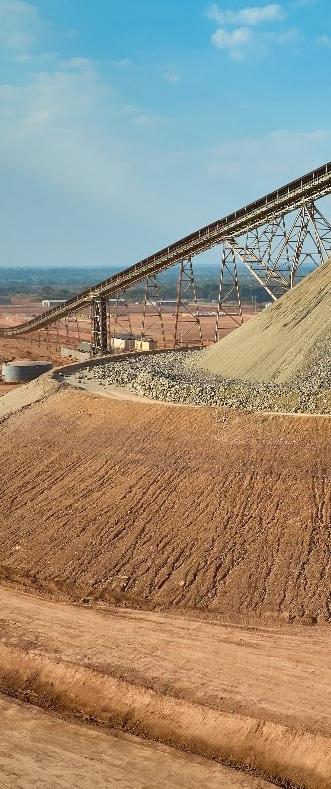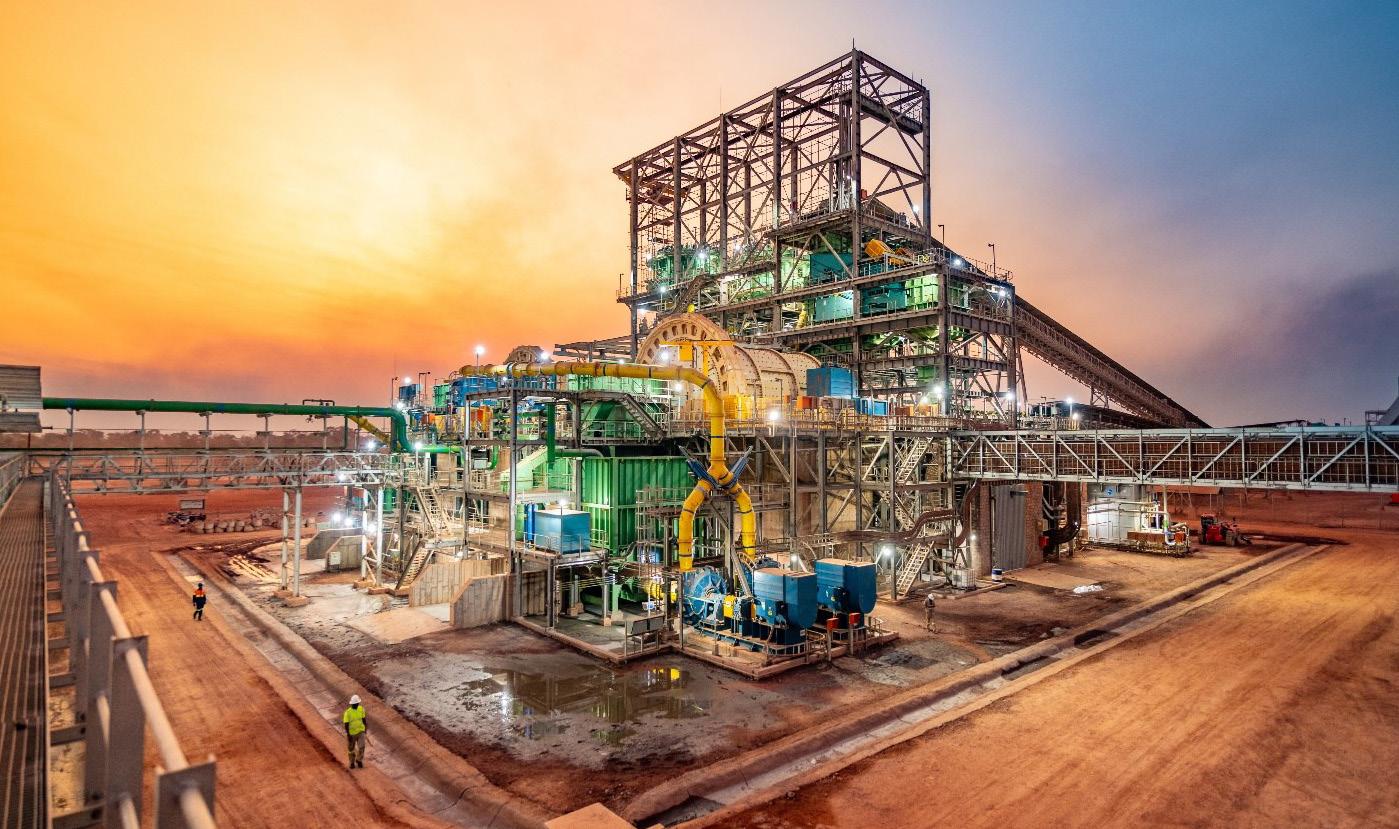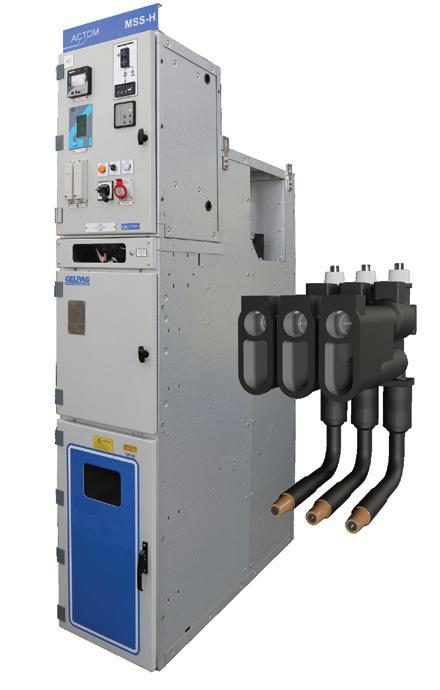

 Global Great of Copper Production
KAMOA COPPER
Global Great of Copper Production
KAMOA COPPER



 Global Great of Copper Production
KAMOA COPPER
Global Great of Copper Production
KAMOA COPPER
PRODUCTION: Sam Hendricks
Ivanhoe Mines began its explorations in the Democratic Republic of Congo (DRC) more than 25 years ago, and its Kamoa-Kakula Complex is the world’s fastest growing, highestgrade copper mine on track for production of approximately 650,000 tonnes this year. Recently completing construction of a new concentrator, the first concentrate shipment of a 10,000-tonne trial has also just arrived by rail at the port of Lobito, in Angola.

 © Kamoa Copper
© Kamoa Copper
//Copper is known as the ‘metal of electrification’ and is, as such, essential to all energy transition plans; despite such a critical status, as this transition intensifies a potentially significant supply-demand gap is forecast, which substitution and recycling will not be sufficient to plug and meet the demands of electric vehicles, power infrastructure and renewable generation.
Uniquely positioned along the Central African Copperbelt where substantial undeveloped gold, cobalt and high-grade copper deposits exist, the DRC plays host to some of the highest-grade copper reserves globally. Ivanhoe Mines’s DRCoperating subsidiary Kamoa Copper produced its first copper in May 2021, and through phased expansions, the Kamoa-Kakula Copper Complex is positioned to become one of the world’s largest copper producers.
“The Kamoa-Kakula Copper
Complex has been independently ranked as the world’s largest, highgrade copper discovery by international mining consultant Wood Mackenzie,” Kamoa Copper explains. “KamoaKakula is powered by clean, renewable hydro-generated electricity and the Kakula Mine will have one of the most favourable environmental footprints of any tier-one copper mine worldwide.”
Kamoa-Kakula produced 393,551 tonnes of copper in concentrate in 2023, representing a year-over-year increase of 18%, while 2024 production guidance is maintained at 440,000 to 490,000 tonnes. Predictions hereafter have had to be ripped up and rewritten following the completion in May of construction of Kamoa Kakula’s Phase 3 concentrator, both ahead of schedule and within budget.
First ore was fed into the concentrator at the end of the
month, with the first Phase 3 concentrate expected in early June.
This Phase 3 concentrator increases Kamoa-Kakula’s copper production capacity to more than 600,000 tonnes per annum, placing it firmly as the fourth-largest copper mining complex globally; its Phase 1 and 2 concentrators, meanwhile, have produced more than 63,000 tonnes of copper just since the start of April.
“The Kamoa-Kakula operations team continues its industry-leading execution with the early and onbudget delivery of the Phase 3 concentrator and underground mining operations,” summarises Ivanhoe Mines’s Founder and Executive Co-Chairman Robert Friedland.
“Given the outperformance of Kamoa-Kakula’s operations to date, including higher than expected throughput and recoveries at the Phase 1 and Phase 2 concentrators, we are now studying options to boost


MSS-H 12kV SOLID-DIELECTRIC INSULATED SWITCHGEAR (SIS)

• SF6 free, metal-enclosed, fixed pattern switchgear
to IEC 62271-200
• LSC2B-PM (highest level of service continuity)
• 12kV Rated voltage
• 95kV Rated impulse withstand voltage
• Epoxy resin insulated and fully earth screened individual poles and busbars
• Up to 40kA and 3150A (4000A with forced cooling)
• Internal arc classification IAC AFLR 31.5 kA 1 sec
• Type “C” cable interface bushings
• Severe service conditions IEC62271-304-Class 2
• Visual isolation and earthing
• 3-position disconnector with integral earthing
• Width: 500mm (1250A), 700mm (2500A), 1000mm (4000A)
copper production towards our next goal of 800,000 tonnes per annum, a production rate that would propel the Kamoa-Kakula Copper Complex towards being one of the two largest copper producers on our planet.
“It is only early days in terms of the broader copper growth story at Ivanhoe Mines,” Friedland was keen to clarify.
In January, the company announced the arrival, by rail, of the first 1,100-tonne concentrate shipment of a 10,000-tonne trial from the KamoaKakula Copper Complex at the Atlantic Ocean port of Lobito, in Angola.
It constitutes the first export of copper under a new concession from the DRC and Angola utilising the Lobito Atlantic Rail Corridor, linking the Democratic Republic of
Congo (DRC) Copperbelt to the port of Lobito in Angola. The line extends nearly 1,300 kilometres east, from the port of Lobito to the Angola-DRC border town of Luau, then a further 450km east into the DRC to Kolwezi.
Currently, Kamoa-Kakula trucks its copper concentrates by road across sub-Saharan Africa to the ports of Durban in South Africa and Dar es Salaam in Tanzania, as well as Beira in Mozambique and Walvis Bay in Namibia. In 2023, approximately 90% of KamoaKakula’s concentrates were shipped to international customers from the ports of Durban and Dar es Salaam, an average round-trip of 40 to 50 days.
The distance from Kamoa-Kakula to the port of Lobito is halved by the rail line, and transportation is both quicker and significantly less energyintensive; once fully active, the Lobito
Atlantic Railway Corridor is expected to significantly improve the logistics costs and reduce the carbon footprint of Kamoa-Kakula copper exports.
“Our first trial shipment is an important milestone on the path to creating a new supply chain linking the Central African Copperbelt to world markets,” Friedland summarised.
“Establishing a reliable, modern rail link to the port of Lobito in Angola will have transformational benefits for the people of the Democratic Republic of Congo, Angola and Zambia.
“The world desperately needs the ultra-green copper metal that Ivanhoe Mines produces in the DRC.”





